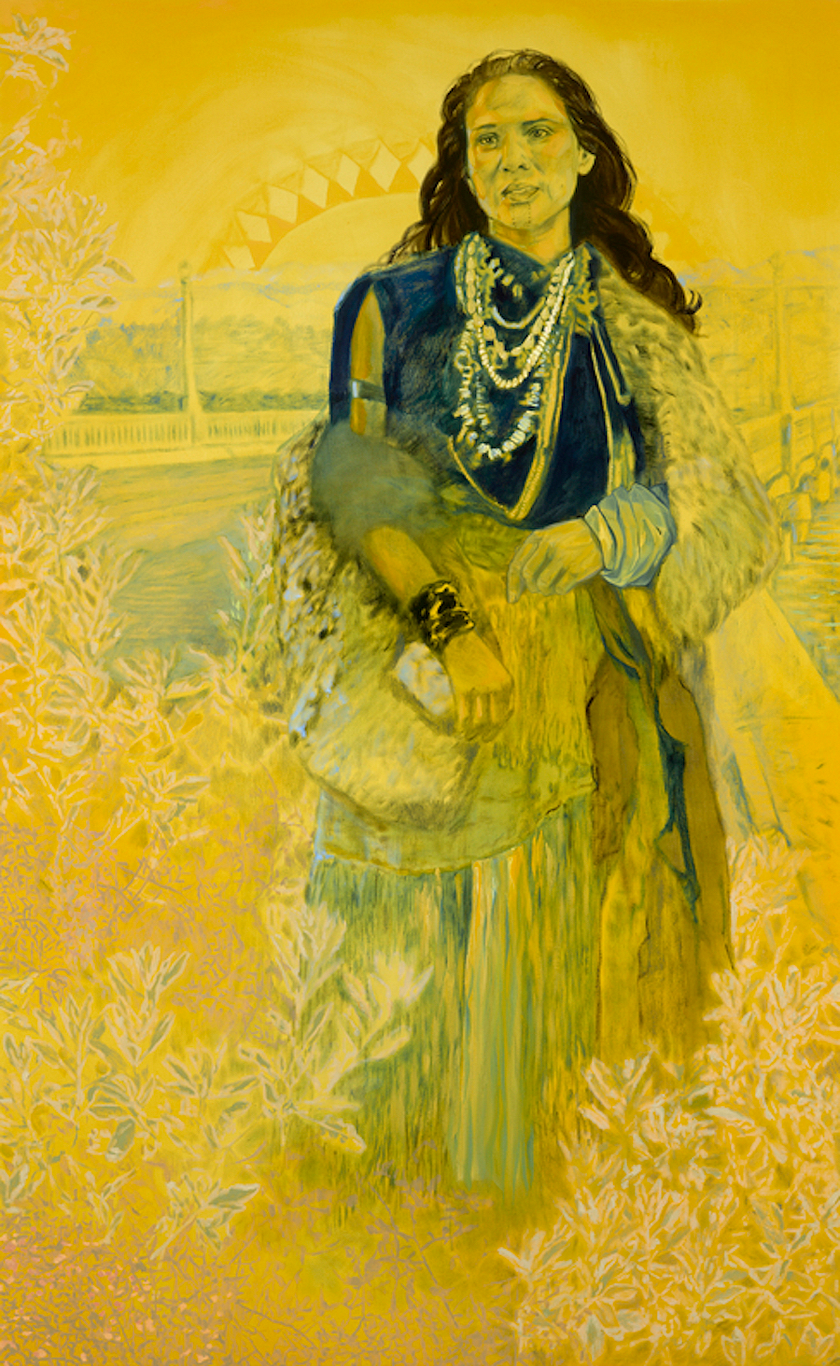THE IRIDESCENCE OF KNOWING
Oxy Arts
Los Angeles
Sept. 14 – Nov. 18, 2023
The Iridescence of Knowing at Oxy Arts is quietly radical, but, really, it shouldn’t be quiet or radical to amplify Indigenous voices, perspectives, and movements to reclaim ancestral lands. The exhibition includes artists who are native to Tovaangar — the expansive area now known as the metropolis of Los Angeles — working in both traditional and contemporary media.
The organizers are Mercedes Dorame, Oxy Art’s 2023 – 24 Wanlass Artist in Residence, and visiting curator Joel Garcia, co-founder of Meztli Projects, an Indigenous-based arts and culture collaborative. The exhibition includes basketry, pendants, and utensils alongside video, painting, and digital media. The curatorial choices are meaningful in that museums and galleries tend to follow divisions set up by Western academia, in which implements would typically be found in archaeological or cultural spaces and visual art in galleries. In another example, though radical might be a stretch for a wall label, it was both refreshing and ingenious that the texts accompanying each piece featured the artists’ own words. Rather than a curator or the museum staff contextualizing the work, artists themselves communicate their ideas.
Land Back, a national movement to return lands to Indigenous and First Peoples, is called out as a hashtag in several wall texts. One recent success of Land Back was local: a plot at the edge of Eaton Canyon was transferred by its previous owner to the Tongva community. Three ink drawings by Samantha Morales-Johnson depict native and non-native plants on the recently returned land, Huhuunga. Using reddish orange to indicate the native plants and a graying green for the non-native, Morales-Johnson’s images demonstrate how native plants, singular lights in mini-landscapes, shine despite the non-native plants that dwarf them. As the artist notes in the accompanying text, “The same overwhelming dilemma that our plants face in urban spaces, we, the Tongva people, also experience as we face challenges in representation even within Indigenous spaces.”
Weshoyot Alvitre’s updated image of the seal of the city of Los Angeles features a Gabrielino-Tongva woman in traditional dress clutching a ceremonial implement that resembles a dagger. Alvitre seeks “to reassert the narrative that the Tongva are a sovereign nation and that Native women can also have a place in political power.” One of three panoramic photographs of local landscapes by Lewis deSoto centers the land — soft, green hills etched with a narrow road — as the predominant focus with elements of contemporary urban life — a black drainage pipe in the foreground and the city like a distant haze — as if afterthoughts.
Of her bulbous coiled basket, Jessa Calderon writes, “The Basket’s name is Good Vibes Only. The markings in black represent energy. The purpose of the basket is to make people happy when they view it. As well as to … hold/gather medicines.” Indeed, a peaceful and inclusive sensibility seems to permeate the galleries. River Garza’s mixed-media painting features a playful line drawing of a coyote with various elements, such as a paddle and a crosshatch marking time. Garza explains, “The coyote featured in this piece is an ancestral being, one of our relatives that exist among the stars.”






